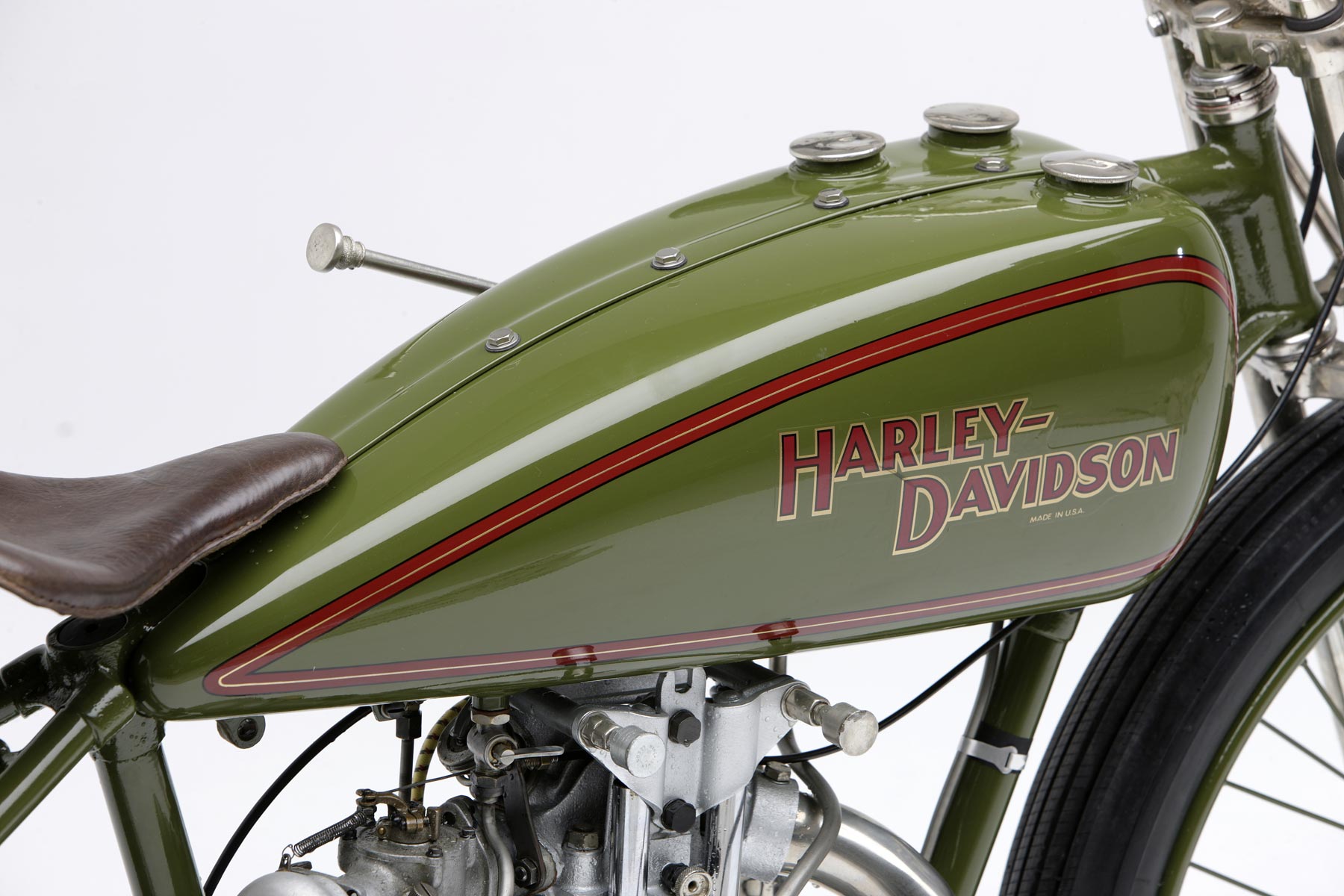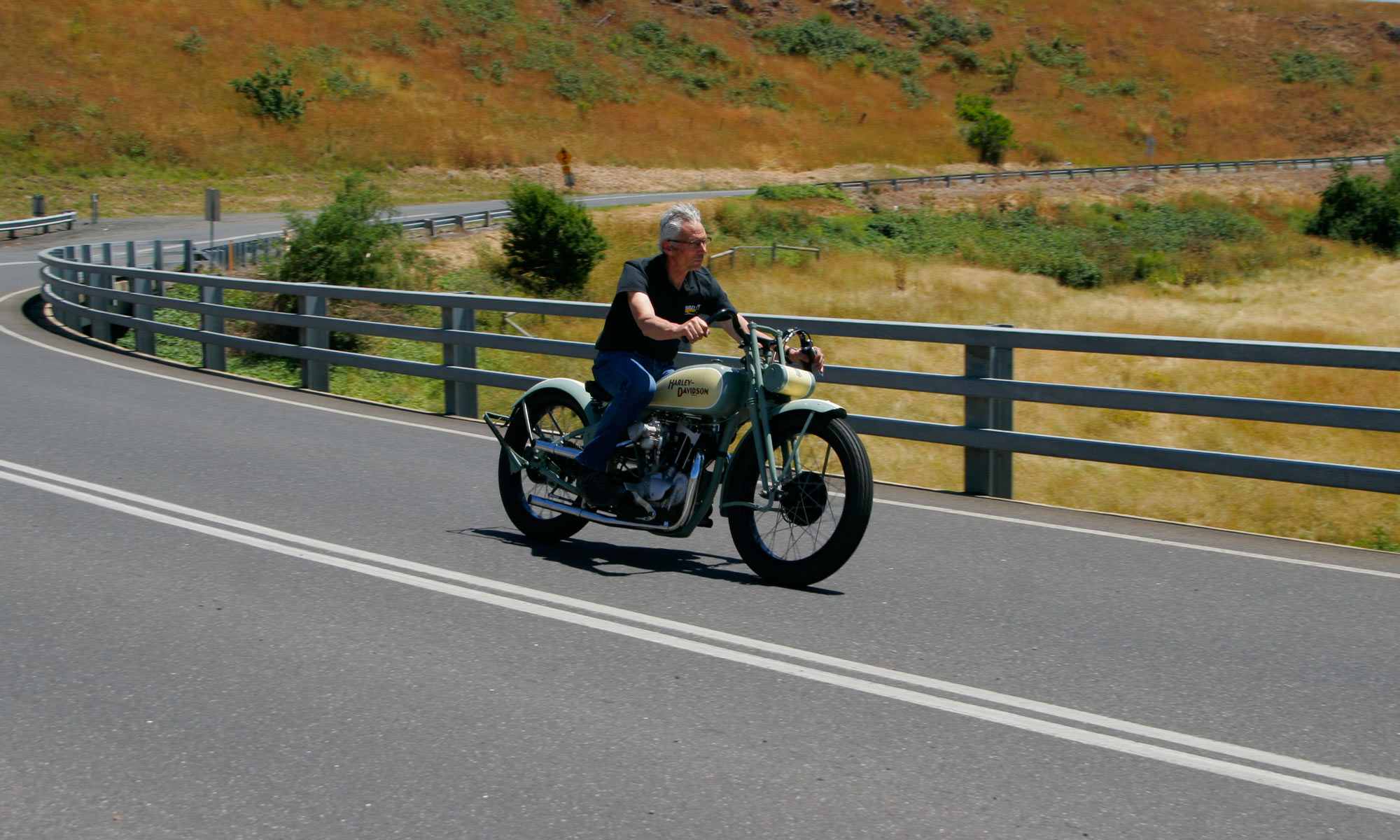
In 1926 as sales of large capacity motorcycles started to decline Harley-Davidson released a series of side valve and overhead valve 350cc single cylinder machines with an eye to the export market in particular England, Australia and New Zealand.<!–more–> Almost 8000 were produced in this year out of a total Harley production of 22,275. The majority were fairly pedestrian side valves but of interest to this story are the considerably more spritely OHV models. In particular with event of speedway tracks which had started in the Antipodes Harley were to introduce a purpose built racer to be nicknamed the Peashooter due to its somewhat unusual exhaust note. These early versions had a weight of 85kg, 8 to 1 compression ratio a short stubby open exhaust and Bosch Magneto, they produced nearly 30BHP. Some 45 of these machines were built in 1926 with at least 6 coming to Australia.

Oval track racing in Australia was becoming very popular with spectators, with major tracks being Maroubra in Sydney and The Motordrome in Melbourne as well as other suburban tracks throughout the country. The success of speedway was not lost on Harley-Davidson who sent out factory rider Eddie Brinck to do battle for the Milwaukee brand. Eddie was to win the golden helmet at Maroubra Speedway in 1926 on his 350cc Peashooter against many 500cc machines. Crowds of up to 15,000 would watch what were to become household names Frank Arthur, Tommy Benstead, Reg Hay, Vic Huxley and Frank Duckett all score victories on the Peashooter.

During 1927 the cylinder head was changed to a two exhaust port type which had become popular for racing machines during this period. The frame was changed to resemble the road going versions although shorter with a counter shaft rather than the 3 speed transmission used in the road bikes. Schebler AM throttle barrel carburettors were used allowing a fuel of cocktail of 75% wood alcohol and 25% benzol to be used. This not only allowed the compression ratio to be further increased but made the engines run much cooler. Power output was now quoted as 35BHP and before the model was to cease production in the mid-thirties it was to reach 40 BHP. Joe Petrali was responsible for much of the development during the later period.

In 1928 the Peashooters main competition was to come from the English Douglas flat twin. Fay Taylour who was England’s lady dirt track champion was to tour Australia at this time with her Douglas. She was to give Billy Lamont, Paddy Dean and Tommy Benstead the hurry up at the Sydney Showground in front of almost 100,000 fans. Speedway had really arrived. From 1928 Australian stars were to go to England and win both fame and fortune. Frank Arthur in particular was a great exponent of racing the Peashooter in England.

While most catalogue Peashooters were 350cc a special run of 500cc versions were made. Several of these were to come to Australia but were never quite as successful as their smaller siblings.

Our Peashooter shown here is number 28SA509 which decoded translates to a 1928 350cc Alcohol Peashooter with countershaft. The tenth competition bike built in 1928. No longer in its original racing chassis which has been replaced with a road going version of the same year.This frame varies in detail and has a slightly longer wheelbase than the original. The extreme vigour’s of racing saw only small numbers of original frames survive. A clutch has been added to make for ease of riding in confined areas. When the original countershaft was installed bikes were push started would then do a lap of the oval for a rolling start. To add to the riders challenges remember there is no brakes.

Looking at the Peashooter is to look at a rolling sculpture. The Harley Racing Department during this period were the ultimate masters of making a motorcycle look like it was doing 100 mph standing still and when one looks at the prices paid for paintings on a piece of canvas makes these bikes absolute bargains!

This bike was procured by Harley City about a decade ago from Queensland. Three years it went to Peter Leech’s establishment in Tasmania where it was given a cosmetic refurbishment by Peter and graphics master Peter Baker.









